5 Creative Ways to Use Cardboard in Theatre Productions
In the world of theatre, imagination and resourcefulness are key. As the spotlight shifts towards sustainability, many theatre producers are exploring eco-friendly alternatives to traditional materials. Cardboard is emerging as a versatile, affordable, and sustainable solution that can bring productions to life without compromising creativity.
Whether you’re designing sets, props, or costumes, cardboard offers endless possibilities to enhance your production while reducing environmental impact. Let’s explore five creative ways to incorporate cardboard into your theatre productions and make sustainability an integral part of your performance.
1. Set Designs:
Set design is where cardboard can truly shine. With its malleability, cardboard can be used to create large-scale, dynamic backdrops, walls, and structures. The beauty of cardboard lies in its adaptability, you can cut, fold, and layer it to create almost any texture or shape. From towering skyscrapers to intricate castles, cardboard can provide the foundation for imaginative set pieces that are both striking and sustainable.
What’s more, cardboard is lightweight, making it easier to transport and set up. And when the show is over, it’s easy to repurpose or recycle, avoiding the environmental waste associated with traditional set materials. For productions that want to go the extra mile, cardboard can also be printed on or decorated to mimic more expensive materials, like wood or stone, creating a high-impact look on a smaller budget.
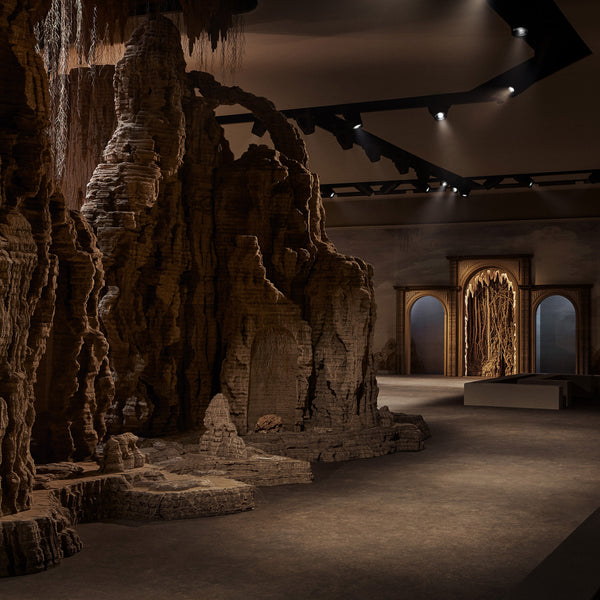
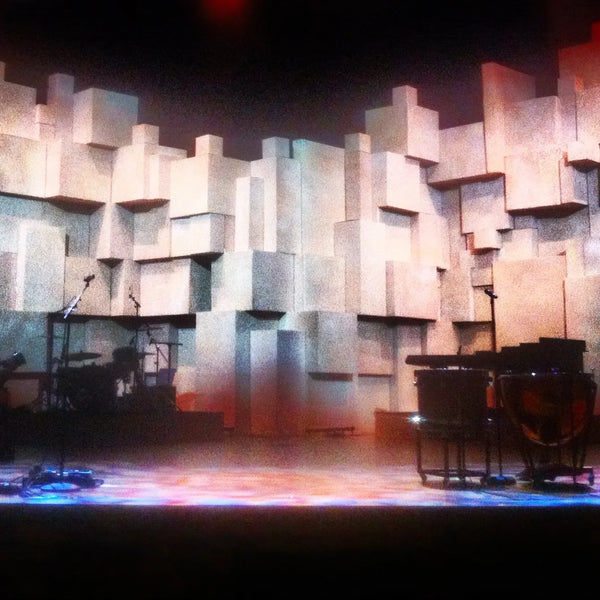
2. Props:
Cardboard is an excellent material for props, especially those that need to be lightweight and easy to move. Whether it’s oversized objects, intricate props, or simple everyday items, cardboard can be transformed into almost anything. Think cardboard swords, furniture, vehicles, or even animals, all of which can be crafted to suit the aesthetic of your show.
Cardboard can also be painted, sculpted, or covered in fabric for a more polished look, making it perfect for props of all shapes and sizes. And because it’s inexpensive, it allows for the creation of multiple props without blowing the production budget.
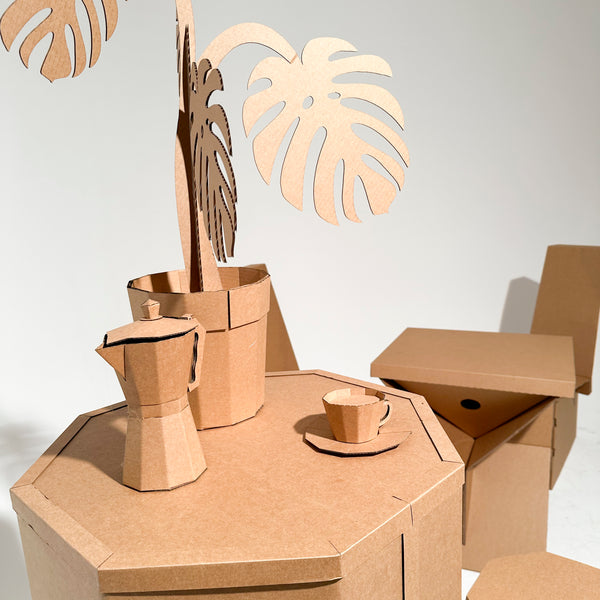
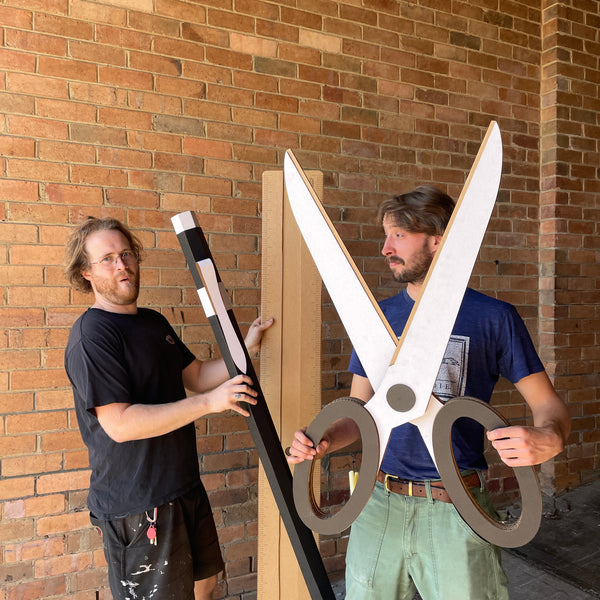
3. Costumes:
Cardboard might not be the first material that comes to mind for costumes, but it can be surprisingly effective. From full-body suits to accessories, cardboard offers a creative way to design costumes that are both unique and sustainable. With a bit of imagination, cardboard can be transformed into a wide range of looks, from futuristic armour to whimsical characters.
The key to using cardboard for costumes is flexibility. It can be bent, folded, or layered to create different textures and shapes. For instance, you could create an elaborate cardboard space suit for a character or make a bold statement with a cardboard helmet. It's also possible to combine cardboard with other sustainable materials like fabric, string, or paper to add depth and colour to the design.
Not only does using cardboard in costumes reduce waste, but it also sparks creativity by pushing designers to think outside the box, literally!
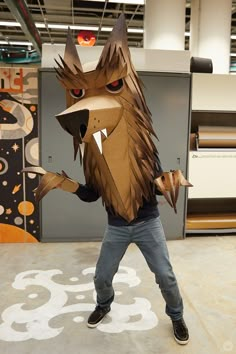
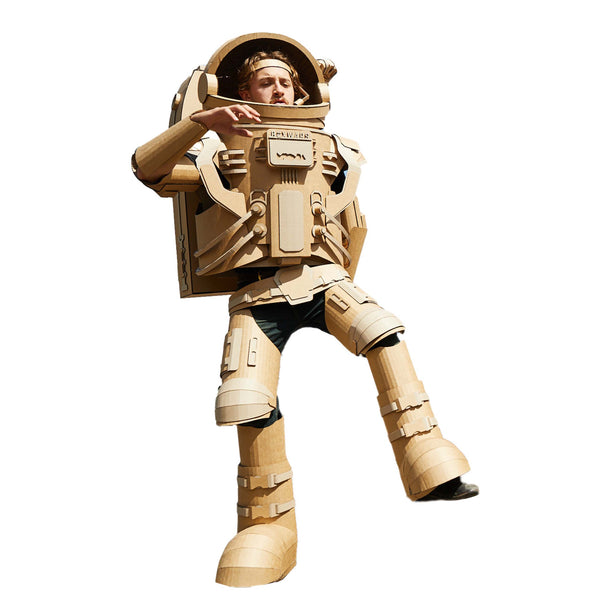
4. Props for Special Effects: Innovative Staging and Interaction
Cardboard isn’t just for creating static props, it can also play a role in dynamic special effects. For instance, cardboard can be used to create interactive elements on stage that engage both the performers and the audience. Imagine a scene where a character smashes through a cardboard wall or an enormous cardboard snake uncoils itself in a dramatic moment. The potential for surprise and spectacle is endless.
We’ve even pushed the boundaries of what’s possible with cardboard in one of our previous projects, where we built an entire cardboard car that could be 'worked on' during the performance. The car featured an engine and moving parts, making it not only a striking visual but also an interactive piece that played a crucial role in the show’s narrative.
Cardboard can also be used for lighting effects. By cutting intricate patterns or shapes into cardboard, you can create shadow plays that enhance the atmosphere and mood of your production. This clever use of cardboard not only adds to the drama of the performance but also offers a sustainable and affordable alternative to more traditional set design options.
The key to using cardboard for costumes is flexibility. It can be bent, folded, or layered to create different textures and shapes. For instance, you could create an elaborate cardboard space suit for a character or make a bold statement with a cardboard helmet. It's also possible to combine cardboard with other sustainable materials like fabric, string, or paper to add depth and colour to the design.
Not only does using cardboard in costumes reduce waste, but it also sparks creativity by pushing designers to think outside the box, literally!
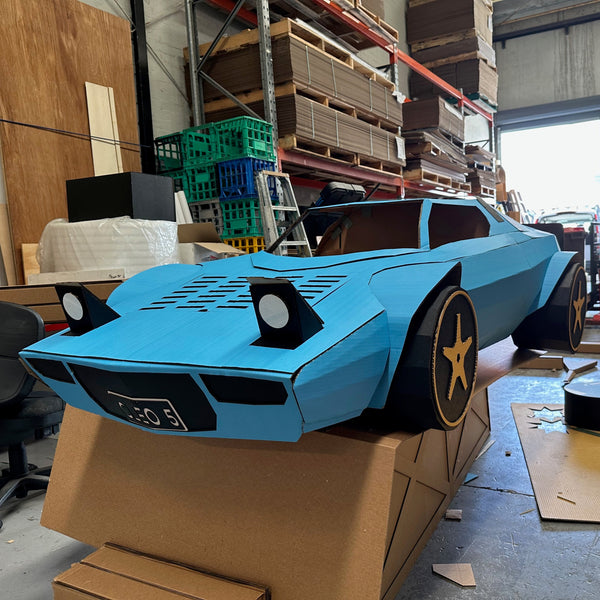
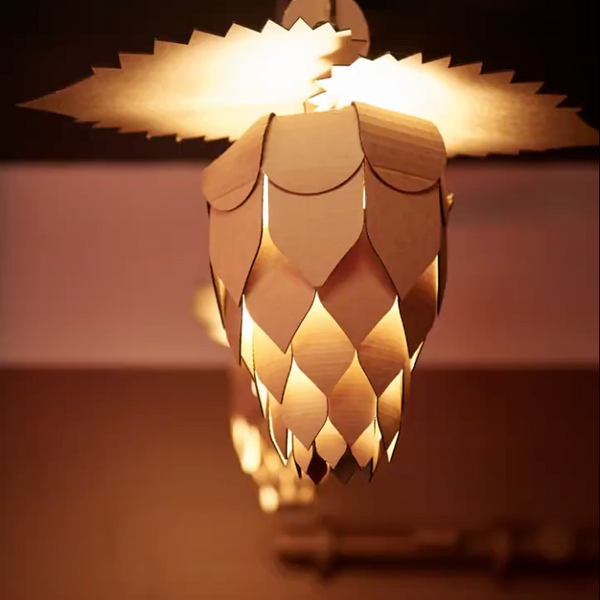
5. Sustainable Backdrops: Eco-Friendly Scenic Design
Backdrops are an essential part of most theatre productions, and cardboard is a fantastic material for creating large-scale, sustainable scenic designs. By using large sheets of cardboard or even corrugated cardboard, you can build towering backdrops that can be painted or decorated to fit the theme of your show.
One advantage of using cardboard for backdrops is the ease with which it can be stored and transported. Unlike bulky wooden sets, cardboard can be folded and stacked, saving space and reducing transportation costs. And once the show is over, cardboard backdrops are easy to recycle, ensuring that no waste is generated from the production.
Cardboard can also be used to create lightweight, mobile set pieces that can be easily moved around the stage, making it perfect for shows that require quick scene changes. Whether you need to create a realistic forest, a busy city street, or a surreal dreamscape, cardboard can be transformed into anything you need, with minimal environmental impact.
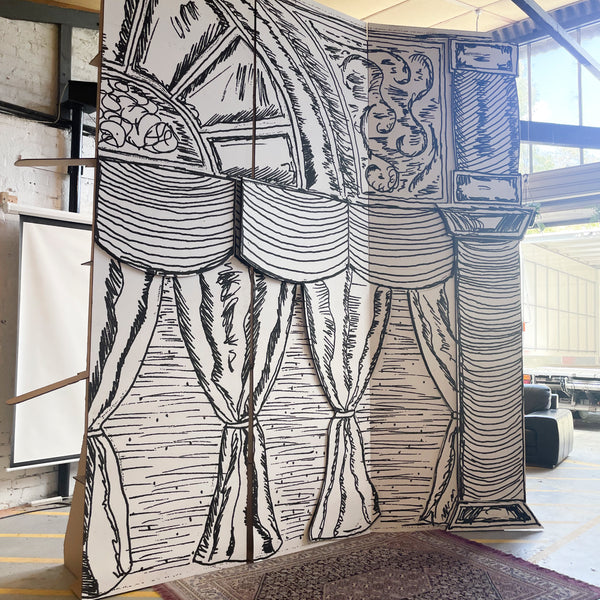
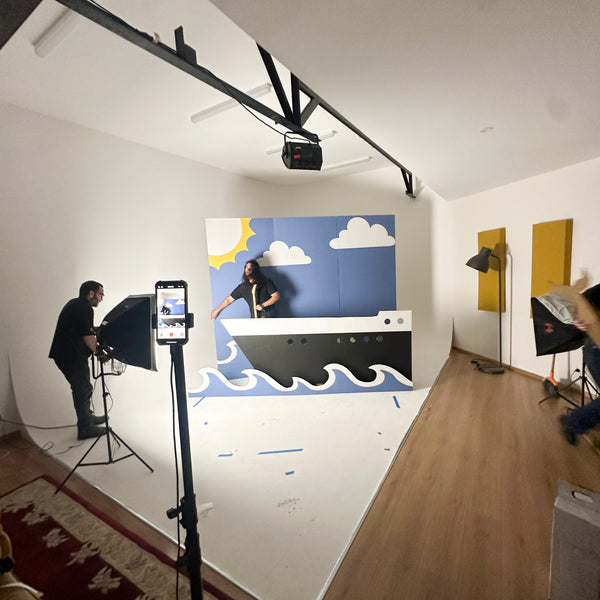
Why Cardboard is the Future of Sustainable Theatre Design
By incorporating cardboard into theatre productions, producers can significantly reduce their environmental impact without compromising on quality or creativity. The benefits of cardboard are clear: it’s lightweight, versatile, and recyclable. It helps create stunning designs while maintaining a strong commitment to sustainability, and that’s something any theatre production can be proud of.
As theatre continues to evolve, sustainability will play an increasingly important role. Cardboard is a perfect example of how creativity, eco-consciousness, and practicality can work hand in hand to create powerful, memorable experiences for audiences—and leave a smaller environmental footprint behind.
